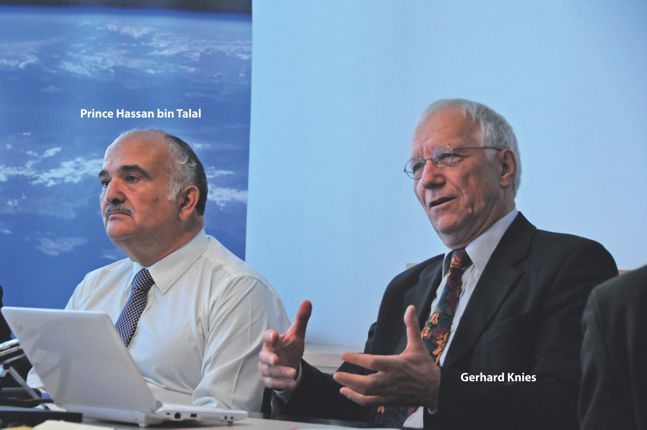High-energy physicist turns solar-energy activist
DOI: 10.1063/PT.3.1158
“Are we really as a species so stupid to put up things that could wipe us out in the end? Not only could we achieve self-destruction through military means, but also with so-called peaceful or civil measures.” That’s what went through Gerhard Knies’s mind when the Chernobyl nuclear meltdown happened in April 1986.
Immediately following the accident, Knies, a high-energy physicist who spent most of his career at the Electron Synchrotron laboratory in Hamburg, Germany, did calculations that convinced him that solar energy offered a solution. “We don’t need to invest in risky nuclear power or in fusion.” By the time he retired in late 2000, climate change had become another big concern globally, “and it was clear that we need[ed] a solution before we run out of fossil fuels,” says Knies. “I started to organize.”
Knies brought together some 40 experts to study the technical feasibility of collecting solar power in the Middle East and North Africa (MENA) and transmitting it to Europe. With promising findings, he and others, notably Prince Hassan bin Talal of Jordan, created the Desertec Foundation in 2009, with the mission of winning over businesses and policymakers to support “clean power from the deserts for climate protection and global security.”
The Desertec Industrial Initiative (Dii) followed. A coalition of industry shareholders, including Deutsche Bank, Siemens, and the reinsurance giant Munich Re, Dii aims to smooth the way for building solar energy plants in the deserts to power both the host regions and Europe; a Saudi Arabian company is the latest to join. “There are a number of obstacles that make it different from normal business,” Knies says. The Dii’s goal is by late 2012 to create conditions that enable private business to build solar power plants in MENA and transmission lines to Europe. The initiative’s focus includes creating legal provisions and securing funding from European and MENA governments. In addition to the foundation and Dii, a third entity is the Desertec University Network, which promotes scientific exchange and knowledge dissemination to build up technological know-how among MENA countries.
Knies says that people in MENA countries “are much more eager to get this project going than are the Europeans.” That stems, he says, from a political stance in the European Union that “renewable energy should make the EU independent of other countries.” But, says Knies, “I had the opposite approach. Only if you consider the rest of the world your enemy do you need independence.”
And from the MENA point of view, solar energy is something they “could do better than Europe. They have a hidden asset, the deserts,” Knies says. “There is no competition for other land use, and it’s almost never cloudy.” Right now, he continues, “people are unemployed, there are not jobs, and there is exploding population. Science has to empower [those countries] to make a product.” Even if MENA countries remain unstable and unreliable, he adds, “they will continue to be our neighbors, so we better help them to have a transformation, and also transform the relations to be cooperative instead of suspicious, defensive, and offensive.”
The EU’s reluctance has eased in the past several years, Knies says, noting that in 2007 Jordan’s Hassan helped gain support for the Desertec mission with a white paper he presented to the European Parliament. And even with many MENA countries in political upheaval, “we cannot wait to have good politics everywhere to save the planet.”

Prince Hassan bin Talal (left) and Gerhard Knies (right)
Palace of His Royal Highness Prince Hassan Bin Talal, Amman

More about the Authors
Toni Feder. tfeder@aip.org
